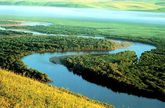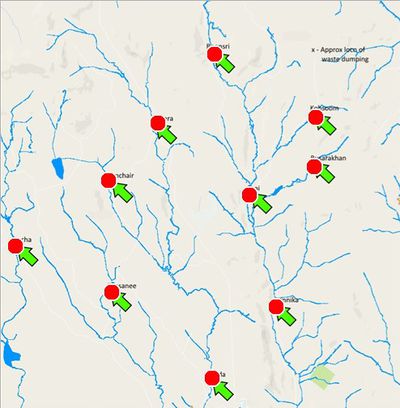Difference between revisions of "ISSS608 2017-18 T3 Assignment SHI CHEN Data Exploratory"
| Line 65: | Line 65: | ||
==== I. Data preparation: ==== | ==== I. Data preparation: ==== | ||
Combine three tables together to get full picture of changes in all observation years, observation location and chemicals. | Combine three tables together to get full picture of changes in all observation years, observation location and chemicals. | ||
| − | + | [[File:2-1.jpg|500px]] | |
| + | |||
==== II. Geographical preparation: ==== | ==== II. Geographical preparation: ==== | ||
| − | + | There is a topographic map in this area. But there’s no other information like latitude and longitude. It should only be used to generate relative coordinates for each observation location. | |
| − | + | ||
| + | [[File:2-2.jpg|400px]] | ||
==== III. Data exploration:==== | ==== III. Data exploration:==== | ||
| Line 75: | Line 77: | ||
==== IV. Statistical application:==== | ==== IV. Statistical application:==== | ||
To find out the abnormal chemical elements faster, in addition to looking at the change values of each substance in turn, I also introduced the concept of Z-score to assist the judgment. | To find out the abnormal chemical elements faster, in addition to looking at the change values of each substance in turn, I also introduced the concept of Z-score to assist the judgment. | ||
| − | + | [[File:2-3.jpg|500px]] | |
The larger the value of z score, the greater the volatility that represents it. | The larger the value of z score, the greater the volatility that represents it. | ||
Revision as of 12:34, 7 July 2018
|
|
|
|
|
Contents
Dataset Description
Here is the brief description of data given by Vast Challenge. In total, there are two files, one is "Boonsong Lekagul waterways readings", which is showing the record of each chemicals throughout the timeline and observation location.
| Variable | Description |
|---|---|
| Id | ID of each record |
| Value | Measured value for the chemical or property in this record |
| Location | Name of the location sample was taken from. They are Achara, Boonsri, Busarakhan, Chai, Decha, Kannika, Kohsoom, Sakda, Somchair, Tansanee. |
| Sample Date | Sampling time (The record shows it was from Jan 1998 to Dec 2016) |
| Measure | Measurement indicators, including more than 100 chemicals and water temperature monitoring as well as monitoring of a biological quantity |
| Unit | Unit of measured chemicals. There are mg/l, µg/l and C. (Macrozoobenthos is not listed with any type of units. ) |
Methodology
Workflow
I. Data preparation:
Combine three tables together to get full picture of changes in all observation years, observation location and chemicals.

II. Geographical preparation:
There is a topographic map in this area. But there’s no other information like latitude and longitude. It should only be used to generate relative coordinates for each observation location.
III. Data exploration:
The geography, the number of species, the number and type of measurement, the number of detections, and the timeline are combined together to explore, to discover their associations and identify the potential factors affecting birds.
IV. Statistical application:
To find out the abnormal chemical elements faster, in addition to looking at the change values of each substance in turn, I also introduced the concept of Z-score to assist the judgment.

The larger the value of z score, the greater the volatility that represents it.
V. Final deliverable: This challenge analysis was done in tableau. Link:
Tool
- Tableau
- JMP
Reference
| Hydrological measurements - published by Important India | https://ocw.tudelft.nl/courses/hydrological-measurements/ |
| TBC - published by Data2X | TBC |

